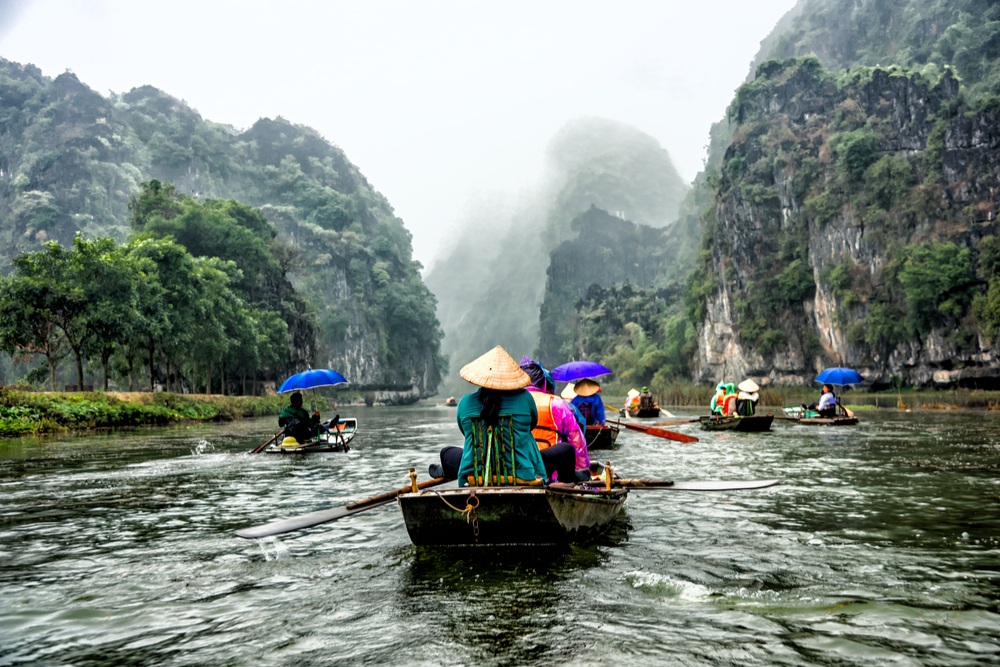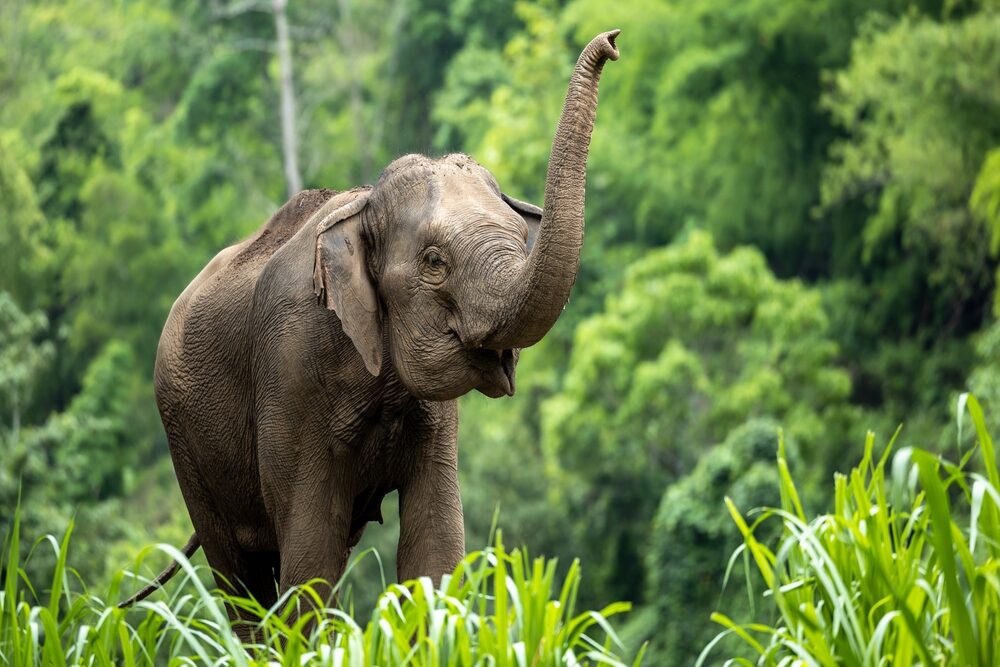Bangkok: Insider’s Guide
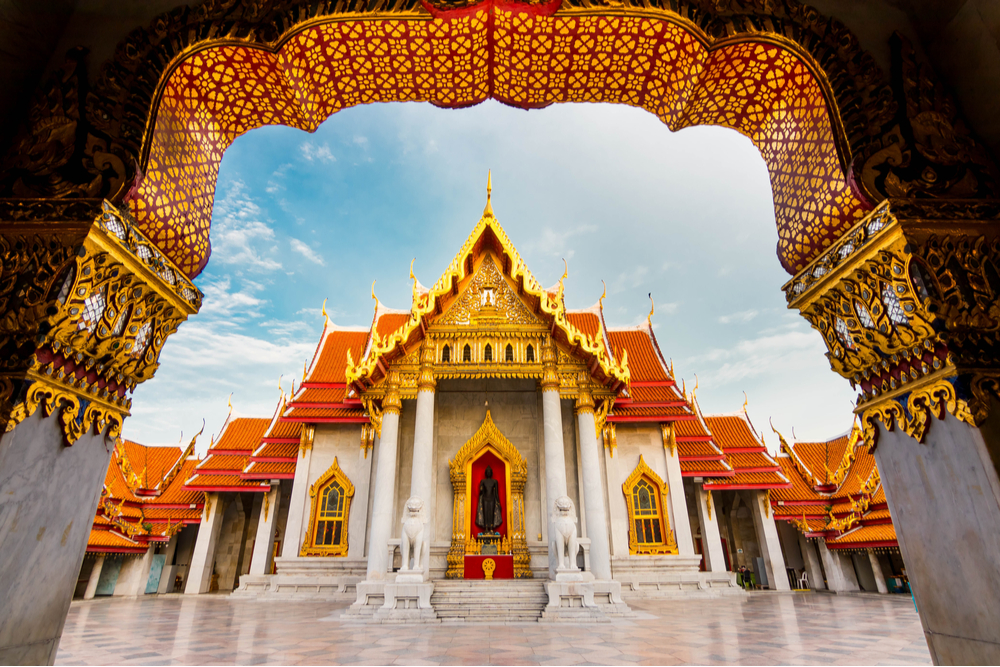 Steeply gabled roofs and gold leaf tipify Bangkok's temple architecture; this is Wat Benchamabophit. Photo: Shutterstock
Steeply gabled roofs and gold leaf tipify Bangkok's temple architecture; this is Wat Benchamabophit. Photo: Shutterstock
The insider advice on this page is from one of Wendy’s Trusted Travel Experts for Southeast Asia: Sandy Ferguson and Ethan Crowley of Asia Desk.
Sandy and Ethan craft tailor-made itineraries that take travelers to multiple destinations in Southeast Asia and combine five-star creature comforts with authentic local experiences. Both grew up in the region: Sandy graduated from the International School of Bangkok in 1969 while his father was serving in the Vietnam war and has planned trips to the region for more than 30 years; Ethan was raised in Cambodia and is fluent in Khmer. Sandy now splits his time between Saigon and the U.S., while Ethan keeps the office running in South Carolina. This team is always candid about what works best for travelers, and, just as important, what doesn’t. They have a vast network of powerful contacts in the hotel industry—which translates into status for you—and a wonderful selection of on-the-ground hosts, all charismatic locals whom Sandy considers family (some of them really are!).
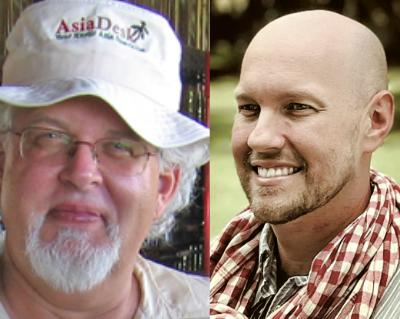
What to See and Do
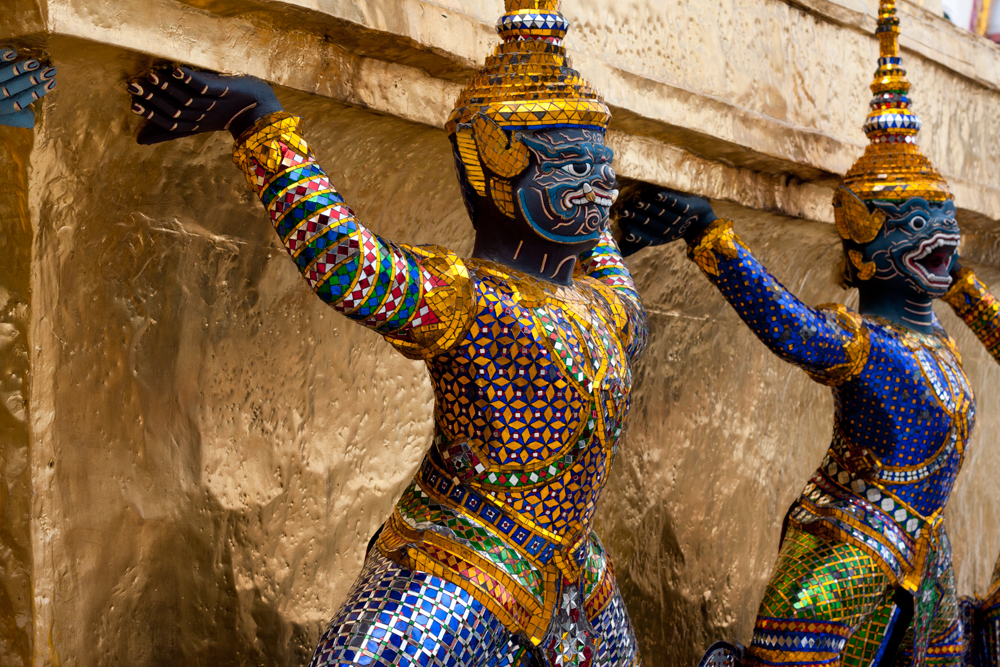
The Grand Palace is one of many must-see sights on Rattanakosin Island. Photo: C Kennerly
Don’t miss
Rattanakosin Island. Bangkok’s old royal district is set on what was once an island bounded by the Chao Phraya River to the west and two connecting khlongs (canals) to the east. The entire area can be covered on foot in a day and has no high-rise buildings or shopping malls. This is without a doubt Bangkok’s most interesting and exotic quarter and the site of, among other things, Wat Mahathat, the headquarters of Thailand’s largest monastic order; the Grand Palace, which includes Wat Phra Kaew (Temple of the Emerald Buddha) and Wat Pho, Bangkok’s oldest and largest wat, famous for its 50-yard-long Reclining Buddha. Wat Saket, in the heart of Rattanakosin Island, is a low hill crowned with a gleaming gold chedi, or stupas, dating from the Ayutthaya period (1350–1767 A.D.). In the morning light, it’s a photographer’s dream.
Don’t bother
Patpong Night Market. After more than 30 years as Bangkok’s most popular nightlife district, its appeal has fallen hard. Lots of pushy touts, aggressive vendors, and a host of seedy venues are just waiting to rip you off.
Downtime
The spa at the Mandarin Oriental is the best (see “Best-value splurge hotel,” below), but if you are not a guest there try the Phothalai Spa (in the Bangkapi area, about a 30-minute cab ride from most hotels). It’s a full “leisure complex” and a favorite of locals. Massage treatments start at just $58 for 90 minutes; follow that with a foot massage for $24, then brunch at one of the complex’s many restaurants. (Remember that traditional Thai massage can be painful and leave you sore.)
Hidden gems
Kudeejeen, an old Portuguese settlement on the opposite side of the Chao Phraya from the Grand Palace. Thailand’s trading history shows through in the Roman Catholic Church of Santa Cruz, the neighborhood’s architecture, and its food stalls. It’s not uncommon to find Thai families here today with Portuguese last names.
For a real glimpse into local sporting culture, catch a Muay Thai (Thai boxing) match one evening. Muay Thai plays a central role in Thai culture and most Thai men have practiced it at some point. You really must experience the sport at the 1940s-era art-deco Rajadamnern stadium, which has a capacity of just 3,000 people. Betting, which is central to Muay Thai, takes place in real time. Odds change as the match progresses, making for a frenetic and chaotic experience. Hand signals communicate the bets (required in the loud arena) and money and books change hands and are passed down each row as the match takes place. It’s a cultural experience not to be missed. Sandy and Ethan can arrange ringside seating, too.
Most overrated place
Chatuchak Weekend Market. Yes, you will be able to buy anything and everything here, but mostly what you’ll find is things that won’t fit in your suitcase, plus crazy heat and insane amounts of traffic getting there. The MBK shopping mall is a good alternative, and it’s conveniently located along the Skytrain.
Most underrated place
The East-Meets-West Hall in the Thai National Museum. The exhibit, which showcases the life of King Pinklao and his key role in maintaining Thai independence from Western colonialism, helps to provide an understanding of modern Thailand. Plus, it’s air-conditioned and a good backup for a hot or rainy (or both) afternoon.
Cheap thrills
Motorcycle taxis. They’re the best way to avoid traffic (and a ride usually won’t cost you more than $2), but wear a helmet!
If you love the idea of sampling Thailand’s famed street food but are worried about hygiene and don’t know where to start, head to one of Bangkok’s numerous food courts, often located within malls. Siam Paragon has one of the largest and best and is a cultural experience in and of itself; you’ll see plenty of young people and local families escaping the heat. The mall is impressive and sociologically interesting—for instance, note the Lamborghini dealership on the 2nd floor. Terminal21 mall is another good option. Food courts have their own etiquette and can be confusing—you’ll need to purchase tickets at the entrance as the stalls don’t accept cash. Then it’s just a matter of browsing the stalls, finding a good starter (try the gui chaai, a local dumpling), a main dish, drinks, etc. A first timer should always get Pad Kra Pao, a delightful stir-fry of beef and basil, which is arguably more a national dish than Pad Thai.
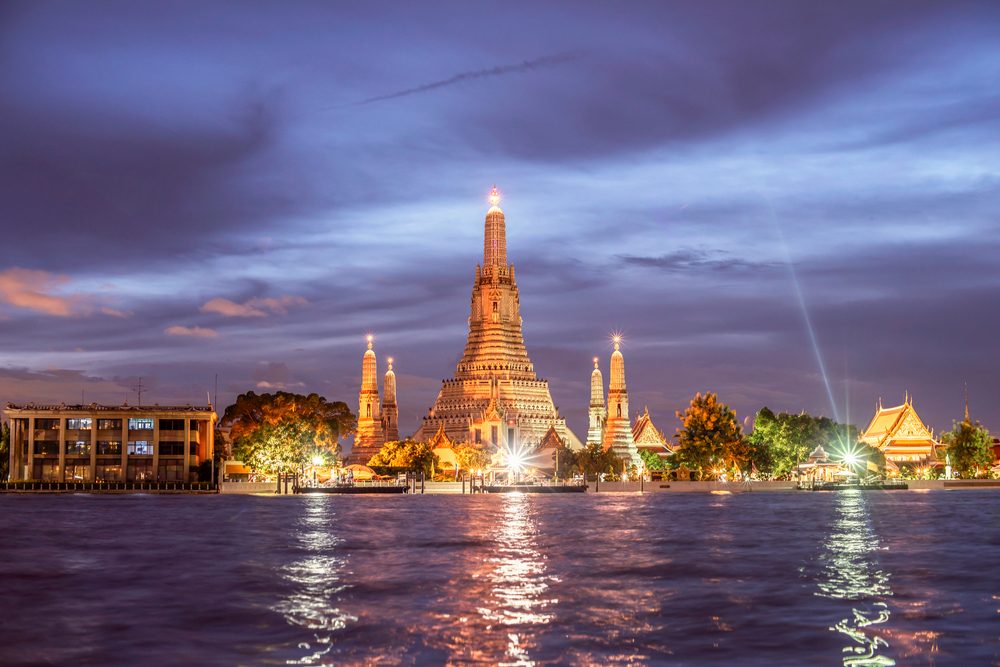
Wat Arun’s nighttime lights make for a great photo op. Photo: Shutterstock
Instagram moments
The view of Wat Arun at night, when the stupa is lit up, from the rooftop of the Riva Arun hotel.
The Pak Klong Talat morning market, where vendors sell flowers of every hue for as far as the eye can see. Be sure to pick up one of the sweet-smelling chains of “love flowers,” which you can see being hand-strung here. Costing almost nothing, these delicate flowers remain fragrant the entire day and make great posts on Instagram.
Where to Stay and Eat
Best-value splurge hotel
The Mandarin Oriental Bangkok is without a doubt one of the finest and most storied hotels in Asia. It’s also the best value you’ll find at the luxury end of the spectrum, and it has recently undergone a complete room renovation. The Superior rooms in the River Wing are just fine, but if you want the prime view, book one of the eight State rooms, which face the river head on.
Best bang-for-your-buck hotel
To see Bangkok properly, staying on the river is a must; there are no traffic jams on the water and the most interesting parts of the city are all on the Chao Phraya. The Riva Surya is located on the royal Rattanakosin Island, one of Bangkok’s most historic precincts (no high-rises allowed here—see “Don’t Miss,” above). The 68-room modern property is loaded with style and charm, including a riverside swimming pool, gym, and, in deluxe rooms, riverside balconies. Its upriver location, near the Grand Palace historic district and five markets, makes it a great base from which to explore on foot. The Riva Surya is also within walking distance of the (at times infamous) Khao San Road Backpacker district and night markets—which are now more interesting and upmarket than in decades past and can be worth an evening visit.
Restaurant the locals love
Raan Jay Fai. This little street food spot has garnered a lot of attention since it was awarded a Michelin star. But owner Jay Fai stays true to her roots and is still working her open-flamed wok; her crab omelet is a favorite. They do have a new reservation system, but expect a wait that is well worth it.
Dishes to try
Phad kra pao gai, or Thai basil chicken, is a local staple eaten for every meal. This mix of chili peppers, garlic, and basil in a sweet soy-and-fish sauce also comes in beef and pork versions. It’s available at most any restaurant; don’t forget the sunny-side-up egg!
Street satay, or grilled skewers of curried meat purchased from street vendors. Whether you choose pork (moo) or chicken (gai), grilled street foods are usually safe to eat, so knock yourself out! The best vendors are in the Victory Monument area and Phahonyothin Road, which is a five-minute walk north of the monument. The vendors start closing up shop after 8 p.m.
Meals worth the splurge
Sra Bua by Kiin Kiin serves Thai food with a modern—and sometimes molecular—twist, mixing traditional ingredients with cutting-edge techniques. It will definitely be different from anything else you have tried.
Bo.lan. The restaurant’s moniker comes from a play on the chefs’ names as well as the Thai word for “historical.” The tasting menu draws inspiration from the old Royal Court of Siam and offers a unique take on classic Thai dishes. You’ll notice much less sugar and more vibrant flavors in the curries and sauces here, which speak to the chefs’ commitment to using the best and freshest local ingredients. Bo.lan is committed to zero waste, sustainability, and supporting local producers.
If you want to make a day of it, take a journey up the river to Suan Thip in Nonthaburi. Suan Thip serves Michelin-starred royal Thai food in a lovely riverside garden setting. Getting there can be a challenge; expect to spend an hour each way on a boat or in a car.
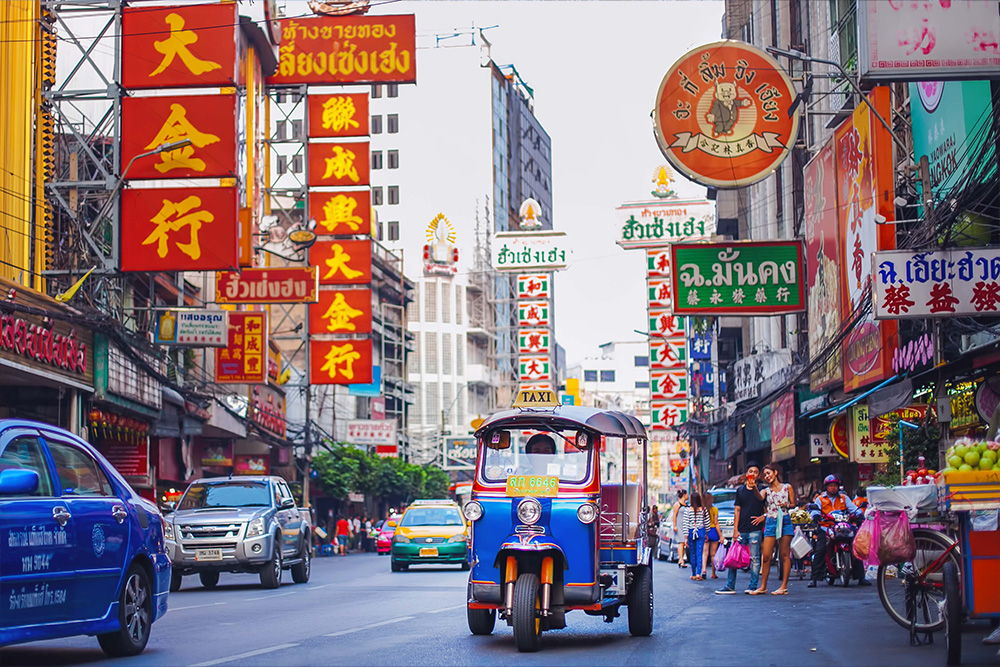
Stroll Chinatown by day, and also at night. Photo: Shutterstock
Bar buzz
Soi Nana is a network of alleyways on the edge of the Yaowarat Road area (Chinatown) with a collection of hip watering holes. Ethan and Sandy’s favorite is Tep Bar, with its “Old Siam” feel and cocktails featuring local Thai flavors and rice moonshine. This area is excellent for people-watching and is popular with expats and local professionals alike.
Prime picnic spot
Lumpini Park. Encompassing 142 acres, Bangkok’s oldest public park was created in the 1920s by King Rama VI on royal property; a statue of the king stands at its southwestern entrance. Lumpini Park was actually named after Lumbini, the birthplace of Buddha in Nepal, and at the time of its creation stood on the outskirts of Bangkok. Today it lies in the heart of the main business district but still retains plenty of quiet spots for a midday picnic (with the occasional view of an impressive monitor lizard).
Best Times to Go
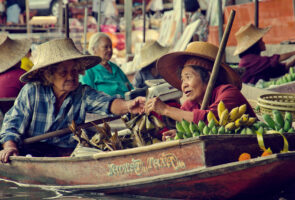
November through January sees the coolest temperatures and least humidity, but it’s crowded.
April and May are gems for bargain hunters, as it’s low season; just be prepared for steamy days in the 90s. Songkran, the traditional Thai New Year’s festival, takes place the second week of April and is a fun time to visit.
Worst Time to Go
September is hot and rainy.
Biggest Rookie Mistake
Visiting Bangkok at the beginning of your trip. This sprawling metropolis can be overwhelming as a first destination; instead, put it at the end of your journey, when its luxury hotels, great food, and excellent shopping scene make it the ideal place to rejuvenate before heading home.
Words of Warning
There are plenty of places that sell gemstones in Bangkok, but don’t buy expensive jewelry unless you really know what you’re doing. Otherwise, you might get home and find that your gem isn’t worth quite what you paid for it.
Yes, you can have a suit made overnight for about $100, but know that it’s impossible to have a quality suit made overnight. Bangkok is full of fine tailors that offer great value. Ask your hotel for a recommendation and be prepared to pay for quality and to go back for a fitting or two.
Must-Have App
Grab Taxi, Thailand’s version of Uber, will save you from taxi drivers who refuse to turn on the meter and charge atrocious fares.
Tipping Tip
Tipping in restaurants is not necessary, since a 10 percent service fee is usually included. But an additional 100 Thai baht is always welcomed and shared by those who serve.
In a taxi, round up to the nearest 100 baht.
Airport Intel
Beware the “freelance taxis” at all airports; instead, take a car service (there are stands in every arrival hall) or a metered taxi from the queue. Never get into an unmarked vehicle, no matter how good the driver’s English may be, as you will likely be cheated.
Treat yourself to VIP services at Suvarnabhumi Airport, especially when arriving late on an international flight. You’ll be met at the gate by a representative who will take you through a private and expedited immigration process. Bangkok is a major air-transportation hub, and there’s nothing more trying after a long journey than standing in more lines! After getting stamped into Thailand, the representative will accompany you to the baggage claim and through Thai customs. It costs between $120 and $200 for two people and is worth every cent.
Most international airline schedules have you arriving in Bangkok very late at night; flights back to the U.S. typically depart in the morning. This means you will have to take a “forced overnight” in Bangkok on both ends of your trip. It’s most convenient to spend your first night in Thailand within the airport complex at the Novotel Suvarnabhumi. Normally, because of the time difference (you are about 12 hours ahead of yourself when you land), you will find yourself sleeping only a few hours and awakening quite early the following morning, ready to fly to your first destination.
Don’t Forget to Pack
A waterproof windbreaker for cool evenings and the short but intense downpours. Also bring plenty of light cotton shirts, skirts, and trousers, and hearty cotton handkerchiefs to wipe the sweat from your brow!
The Souvenir
Casual clothing, such as colorful and light elephant pants for women and stylish denim-colored “farmer’s shirts” for men, is sold everywhere. Opt for the native organic cotton and your garments will last a lifetime.


